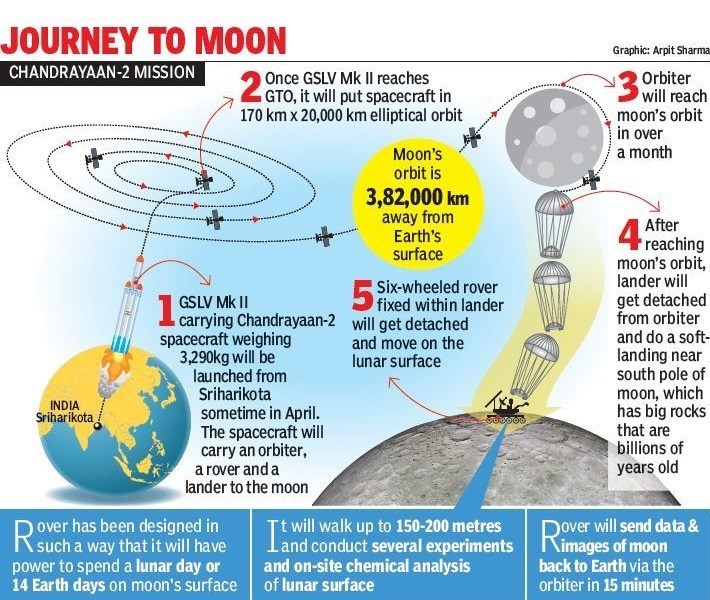7667766266
enquiry@shankarias.in
Why in news?
ISRO recently announced the launch date (July 15, 2019) of Chandrayaan-2 mission, after the long delay from the scheduled launch.
Why was the delay?
What was Chandrayaan-1 mission?
What are Chandrayaan-2’s features?

What are the challenges?
What is the significance?
Source: Indian Express